Chichen Itza was virtually unheard of on the mainstream tourist trail before 2007, when it was named as one of the 7 wonders of the world based on an online poll. The poll gave it status alongside India’s Taj Mahal, The Great Wall of China, Machu Picchu in Peru, Petra in Jordan, Italy’s Colosseum and Brazil’s Christ Redeemer. Since then it’s been a major drawcard for Mexico and something I’ve had on my bucket list, so I headed to the nearby town of Valladolid to take a look at what all the fuss was about.
Chichen Itza, is just a half an hour bus ride from town, making it an easy day trip. I’d suggest getting there early though, because the tourist buses start coming in thick and fast from about 11am and it’s best to be well ahead of them if you want to explore the monuments in peace and perhaps get some photos free of people.
It is an ancient Mayan town that was developed from about 750 AD to 1200 AD, and is believed to be one of the largest Mayan cities. El Castillo is the site for which Chichen Itza is best known. This Kukulkan Pyramid stands 24 metres high and dominates the centre of the town. This is a step pyramid and has 9 terraces and a temple on the summit. Unfortunately people are no longer allowed to climb up the platform, I imagine the view from the top is quite amazing. At the Spring and Autumn equinoxes the sun apparently casts a shadow that looks like a serpent wriggling down the stairs, which explains why the structure was named after the feathered serpent god named Kukulkan.
It’s impossible to ignore, and reminded me a lot of the Pyramids of Giza in Egypt. But El Castillo isn’t the only site in Chichen Itza, there’s certainly a lot more to see here.
The town itself was once the regional capital and centre for political, cultural and economic activity and covers about 5 square kilometres. It’s no surprise that it was conquered over time and also inhabited by the Spanish, but it wasn’t until the mid 1800’s that its archeological importance was recognised, and excavation and documentation of the area began.
The Great Ball Court is one of the most interesting playing fields I’ve ever seen. It’s 168 metres by 70 metres in size and the hoops are over 8metres high. Those relatively small hoops are located very high up, and the aim of the game was to get a ball in there. Given that the Maya aren’t the tallest of people it does beg the question how did they do it?
Apparently they wore very heavy stone hip belts that they used to hit the ball up and into the hoop. I can’t imagine our mammoth basket-ballers today being able to achieve that, let alone thousands of years ago!
Other places of interest include Skull Platform (Plataforma de los Craneos), The Platform of Eagles and Jaguars (Plataforma de Aguilas y Jagueras), The Temple of Warriors (Templo de los Guererros) and the Group of a Thousand Columns which are both near to the El Castillo.
Walking through the complex there are some really interesting insights into ancient Mayan culture, including some smaller pyramids that have some dispute as to what they are. Depending on what you read they are either where the priests were buried and / or where human sacrifices were made. But my favourite is the group of buildings near the Observatory called the Nunnery Group. They include a convent (although it’s now believed to be a government building) and a church, which have some gorgeous sculptures.
So was it worth the diversion? Absolutely, I’m glad I’ve seen Chichen Itza, but I now also have the benefit of knowing that there are even more incredible Mayan ruins in Central America, so I’m even happier that I chose to continue travelling around the region and into Guatemala, more to come on that soon.
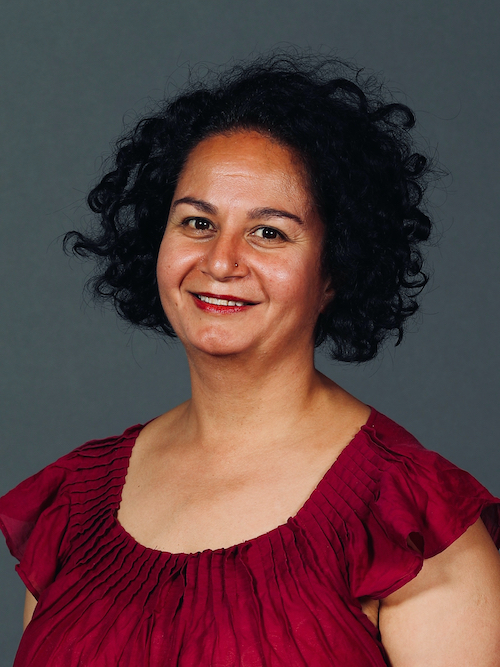
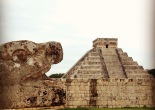
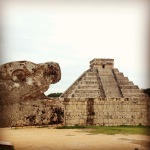
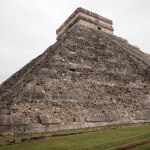
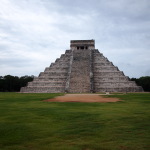
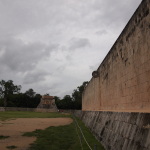
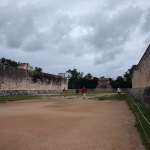
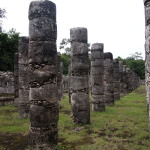
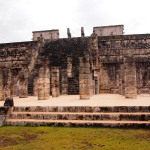
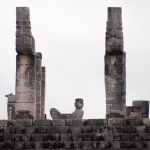
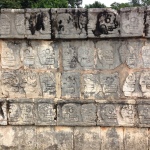
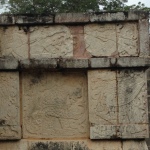
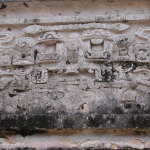
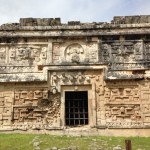
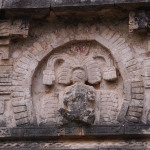
Leave a Reply